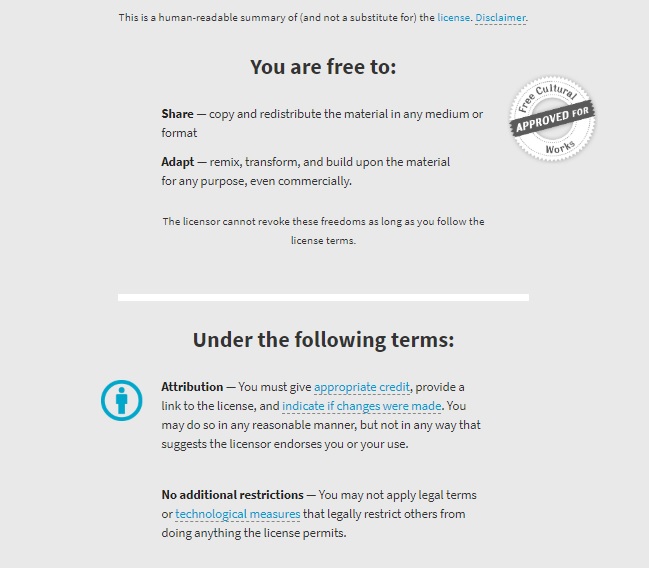“This is how you do it: you sit down at the keyboard, and you put one word after another until it’s done. It’s that easy and that hard.” — Neil Gaiman
Writing a book is a dream for many folks. Some try very hard to write a book from scratch but never get very far. Others take baby steps. Little by little, they manage to put something meaningful together. Nevertheless, they fall short of writing that elusive full-length tome.
Some writers have success by beginning their writing journey with a blog. Often, starting a new blog feels more like a hobby than a formal writing project. Over time, this “hobby” gains enough traction to earn the writer a regular following.
If they have been successfully blogging for awhile, they will have accumulated a significant amount of content. It could make sense for a recognized blogger to transform their blog posts into a full-length book.
This article will explore how blog posts can be compiled into a book. It will cover five ways it can be done, including how hiring a ghostwriter can help with such a major writing project.
Getting Started: Outlining a Non-fiction Book
Outlining is the first major step in getting started producing a full-length book. Starting with a fully developed outline can help with the writing process and organization of the book.
There are two major reasons why an outline is important.

First, an outline serves as a roadmap for the book’s content.
Many writers get stuck without the guidance of a clear outline. In some instances, they may write copious amounts of material. However, they are unable to translate the material into a seamless narrative.
Books without a consistent narrative are likely to fall short of readers’ expections.
Second, a solid outline allows writers to pick and choose which blog posts fit their vision for the book.
The outline provides criteria that can measure whether a blog post should be included in the final book. Without these criteria, mashing blog posts together can result in a disjointed final product that fails to convey the intended message.
When outlining a book, it is crucial to determine the book’s message.The blog posts must fit the message and not the other way around. A common mistake is to attempt to force a narrative around a collection of blog posts. Blog posts often touch on different subjects and have different approaches to them. Using a central message around which to select posts is more effective than trying to develop criteria from various posts.
The following steps will facilitate the overall process:
- Create an outline or table of content that reflects the book’s content.
- Search for the blog posts that fit the criteria presented in the outline.
- Compile the blog posts to create a working manuscript.
- Edit existing posts while adding new material to ensure a smooth narrative.
Please bear in mind that this process is not about merely shoving posts together into a volume. It is about weaving them together much like a quilt. A great outline can also become a highly useful tool when a ghostwriter comes into the picture.
Number One: “Blogging” a Full-Length Book
A common complaint among writers is that they do not have enough time to sit down and write a book. However, most bloggers already commit a specific amount of time to their blog. They have time to write, but don’t feel they have time to compile an entire book.
Consistent bloggers can leverage their writing habits into a full-length volume. The secret is to break up the entire book into blog-sized chunks.
By dividing the workload this way, producing the overall content is less demanding on the writer’s time.

Additionally, divvying up the material softens the psychological impact that writing a book can present. Focusing on 500-to-1,000-word blog posts at a time builds momentum, which can push the project forward.
A full-length book usually falls in the 30,000 to 50,000-word range. By “blogging” a book piece-by-piece, reaching this significant word count is accomplished in a steady and systematic way.
Use the following steps to “blog” a full-length book:
- Build an outline that reflects the book’s overarching message and theme.
- Divide the material into blog-sized posts (500 to 1,000 words).
- Publish “chapters” on your blog following a specific schedule.
- Keep roughly 25% of the chapters exclusively for the finished book.
- Compile the set of blog posts into a working manuscript.
- Review the material to ensure a consistent narrative.
A good rule of thumb is to avoid publishing everything on the blog. After all, why would readers be interested in the book if everything is on the blog? Moreover, the book will not sell if the content is freely available on the blog. Creating a certain amount of material exclusively for the book will keep it useful and interesting.
Number Two: “Blogging” Short Books
Some writers prefer to break up a single, full-length book into a series of smaller books. This approach allows writers to publish more books at frequent intervals. More frequent publishing also cuts down on readers’ waiting time.
Like a full-length book, blogging short books begins with publishing blog posts. Each blog post pertains to the overall topic related to each of the volumes in the series. Short books can emerge from a a handful of posts or even one lengthy piece.

Typically, short books range from 5,000 to about 20,000 words. These types of books are common on Kindle or in e-book format.
Short books intend to provide the reader with detailed information on one or two defined topics. For instance, a writer may chose to produce a series on best management practices instead of a single, comprehensive volume.
When blogging short books, writers can use individual blog posts as teasers for the books’ content. As such, published posts can become the introduction to the book. With this approach, writers do not give anything away. Instead, they can create a buzz in readers, enticing them to read the entire book.
Here are some steps to consider:
- Create an outline that encompasses the series’ narrative.
- Break up the narrative into a reasonable number of volumes. Generally, three to five volumes work well.
- Write one major blog post that introduces the volume’s central message without giving away its essence.
- The blog post should avoid becoming too “salesy” but should strive to pitch the book.
Regular bloggers often exploit this approach to generate traffic for their content or drive sales. It can even lead to a steady income stream.
Number Three: Blogging Short Series
Another popular approach among bloggers is to produce a short series. These series usually have a specific theme to them. For example, a blogger may choose to chronicle a trip or detail a project. Creative bloggers often use this format to unfold a story over several “chapters.”
A short series offers a great deal of flexibility as they can generate expectations for every new installment.
How-to guides commonly follow this approach. Each installment in the series builds on the previous one. By the end of the series, readers have a completed project. In contrast, if they miss a chapter, they will not be able to fully reach the outcome.
A short series can also lead to a full-length book. Each installment could serve as a chapter that builds anticipation.
Additionally, short series help readers construct the overarching theme piece-by-piece. This approach allows readers to get valuable information in digestible chunks. As a result, it avoids placing too much information on readers in one volume.

When using the short series approach, writers should consider purposely leaving important details out. These details would only be available in the full book. In doing so, readers would need to purchase the full book to get the remaining pieces of the overall puzzle.
Non-fiction writers can benefit from this format. For instance, blog posts can introduce the main aspects of a case study. Each installment could present individual stories that build on the overarching message contained in the book. However, the blog would not include the book’s value proposition.
Consider this example:
A book on management practices presents a series of case studies on successful companies. Each blog post tells the story of a company turning their management practices around. However, the blog posts do not reveal how each company achieved its results. Readers would need to read through the book to find the specific measures that led to the successful outcomes.
Another benefit from blogging a short series is the possibility of a book series. Often, short stories have the potential to expand into larger books or expanded narratives. Both fiction and non-fiction writers could consider using short stories as a springboard into a book series.
Number Four: Publish an Anthology
An anthology is a collection of writings. Often, publishers bundle poems or short stories into anthology volumes. These collections may or may not have a specific theme to them. Their intention is to provide the reader with a compilation of a writer’s work. Also, an anthology may feature various authors’ work on a specific topic.

For some bloggers, an anthology may be a viable alternative to producing a full-length or short book.
Writers can benefit from producing an anthology as they do not need to “fit” every element perfectly. They can compile various ideas into a bundle that is consistent with an overarching theme. Nonetheless, each element should help build the narrative effectively.
Anthologies also offer more freedom to explore topics. This freedom allows writers to include material that does not necessarily fit in perfectly with the other blog posts in the series.
As a result, writers can allow themselves to the freedom to divert from the topic at hand. Of course, it is crucial to maintain focus on the overarching theme.
Please consider the following steps when building an anthology:
- Anthologies need a common thread that unites every piece. For example, a book could contain several pieces on a specific topic, such as social justice.
- Individual blog posts do not necessarily need to follow a seamless narrative. However, they must have a clear relationship with one another. Disjointed or unrelated blog posts can leave readers confused and the writer’s main message may not be clearly expressed.
- An anthology must have an introduction that helps weave each post into a common theme. The introduction should make it clear what the reader can expect to find throughout the book.
- A conclusion is another important component of a great anthology. The conclusion helps bring the book full circle in a way that leaves readers with something to look forward to. A conclusion can also serve to “hook” readers into anticipating the next short or full-length book.
Bear in mind that anthologies should also contain unpublished material. These “bonuses” help drive interest in the anthology. Otherwise, readers need only go to the blog to get the material. Fans of a blog may be interested in an anthology because the collection gives readers deeper insight into the blogger as an individual.
Number Five: Hiring a Ghostwriter
Unfortunately, there are times when writing projects stall.
When this occurs, it is often a good idea to bring a fresh mind into the fold. Hiring a ghostwriter can be one solution.
A professional ghostwriter can take a series of blog posts and mold them into an anthology, a series, or a full-length book. A ghostwriter can take the overarching narrative and fill in the gaps needed to complete the project.

There are two main benefits of hiring a ghostwriter:
First, professional ghostwriters can take existing blog posts and tweak them to fit the book’s criteria. This approach does not require any material to be rewritten. A ghostwriter can produce new material and link existing blog posts together to build a seamless narrative. With their help, a ghostwriter can greatly reduce the time needed to get the book out to the public.
Second, hiring a ghostwriter allows bloggers to start new blogs or writing projects. Ghostwriters can also take ideas from the blogger and help create new blog posts or even short stories.
This approach is not about hiring a ghostwriter to write a book. Instead, the ghostwriter’s job is to compile existing content and bring the book writing project to fruition.
Ultimately, getting a ghostwriter on board might be the final piece of the puzzle. A professional ghostwriter is always a worthwhile alternative when other approaches cannot seem to bear fruit.
Bringing It All Together
Going from a blog to a full book is a great way to take a seemingly daunting task and attain a long-held dream. Writers who feel they do not have the time to produce a full-length book should think again. After all, producing consistent blog posts will eventually lead to a significant amount of written material.

Building a book from blog posts hinges on choosing a narrative that can bind the various elements together. Consequently, writers must craft a narrative that unites several posts.
Carefully choosing the posts that fit the narrative, and leaving out those that do not, will result in a strategically crafted book.
Lastly, hiring a professional ghostwriter might be the answer to reviving a dormant writing project. Whether it is taking existing blog posts or building new ones, a ghostwriter can help take a writing project from an idea into reality
















